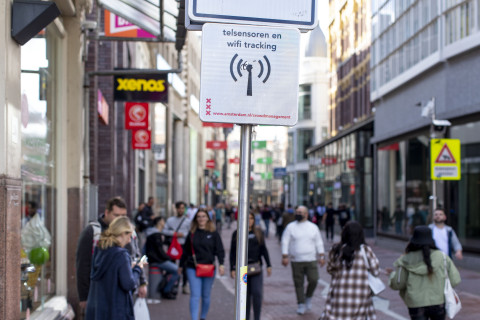Innovating Crowd Management Practice
CityFlows

Project phase
Implementation
What is the goal of the project?
The EIT-KIC project CityFlows aims to improve the liveability of crowded pedestrian spaces through the provision of decision-support for the management of pedestrian flows. The project tests and evaluates various innovative crowd monitoring techniques in real-life settings where large crowds meet, such as mass events, tourist spaces and transfer hubs. The project also prepares a crowd management decision support system for market launch which incorporates these state-of-the-art monitoring techniques.
What is the result of the project?
The main outcomes of CityFlows are:
- A boost in quality and accessibility of urban space (i.e. level of service, throughput and/or safety) of the four European living labs;
- A license-based crowd management decision-support system and software package;
- A design strategy for frameworks of action for crowd proactive crowd management;
- An impact assessment of the deployment of the CityFlows CM-DSS for various types of crowded places across Europe;
- An education package considering innovative crowd management decision-support systems.
These outcomes will be disseminated through a set of international workshops for public and private stakeholders and academics and the generation of an educational package on pro-active crowd management of crowded spaces.
Who initiated the project and which organizations are involved?
AMS Institute and Delft University of Technology (DUT) jointly developed the core of the CM-DSS in collaboration with the city of Amsterdam.
Over the course of five years, the DUT acquired specialist expertise featuring pedestrian sensing techniques, crowd state-estimation algorithms, the interpretation of crowd monitoring systems and the needs of professionals who are managing crowded pedestrian spaces.
For the City of Amsterdam the innovation of urban mobility is an important priority. Ever since SAIL 2015, the City of Amsterdam has provided access to its public space to develop, test and upgrade the CM-DSS. As part of this process, the mobility experts of the City of Amsterdam, its regulatory officers and the Amsterdam police have been collaborating with DUT and AMS to learn and adopt the CM-DSS into their organization.
ALTRAN, part of Capgemini, is the world leader in engineering and R&D services. As CityFlows partner ALTRAN will develop the CM-DSS’s capability to communicate with 5G wireless devices and IoT systems.
Universitat Politècnica de Catalunya – BarcelonaTech (UPC) has been working on the macroscopic modelling of pedestrian flows, which enables users to model flows and walking velocities in a range of scenarios and configurations of the crowd dynamics in the living labs. This software will be used to simulate and feed the CM-DSS’s scenario-based controller.
City of Barcelona, the leader of the MOBILus consortium, has been leading the way in regards to the smart city revolution. This city is unique considering its adaptation of disruptive technologies, such as 5G, in a way that its operation directly benefits society, which is exemplified by their dynamic management of L’Eixample and El Carmel.
ENEA , Italian National Agency for New Technologies, Energy and Sustainable Economic Development, is the second largest public Research Institute in Italy. Specifically, the agency has grown expertise that ranges from the planning, management and control operations of transport systems to the microscopic modelling and simulation of pedestrian flows dynamics.
As part of CityFlows, the City of Milan has set itself as goal to ensure proper safety levels for pedestrians and increase the modal share of public transit, which requires high pedestrian service levels at Milan’s city streets and high accessibility of pedestrian spaces and transfer hubs.




